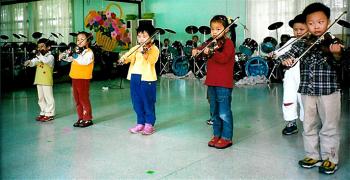Entered China during SARS epidemic
This item appears on page 30 of the January 2021 issue.
The current COVID-19 pandemic is the most recent, and by far the worst, of a series of coronavirus outbreaks over recent decades. For multiple reasons, COVID-19 poses a high risk to me, so, like many others around the world, I’m hunkered down and not traveling. I wasn’t always so concerned.
The SARS (Severe Acute Respiratory Syndrome) epidemic of 2002 to 2004 started in, and primarily impacted, China, especially Hong Kong. The CDC issued travel alerts for Taiwan and Toronto also. Very few Americans were infected by SARS, and even fewer (maybe none, according to some sources) died. Consequently, SARS wasn’t in our thoughts in September 2003 when my wife, Paula Owens, and I were planning our first trip to Argentina.
The travel planning wasn’t going well. Airfares from Charlotte to Buenos Aires were too high for us. Since we had status with the Star Alliance of airlines, I was regularly checking prices on United Airlines.
One day, I noticed a United Vacations promotion for trips to Hong Kong. We wanted to go to Hong Kong someday, but it wasn’t near the top of our list. I clicked on the promotion anyway and was shocked. For only $1,040 each, the vacation package included a flight from Charlotte to Hong Kong via Chicago in coach class, airport transfers, six nights in a good hotel in Kowloon, a half-day Hong Kong tour, an island-hopping day pass for ferries in the South China Sea, and tickets to the Hong Kong Museum of History.
Our status with Star Alliance and the hotel chain would allow us to upgrade from coach to Economy Plus and upgrade the hotel room at no additional cost. This was, and remains, our best travel deal ever! At the time, coach-class flights to Buenos Aires cost more than this entire package. After a brief discussion, we committed to a trip in November 2003.
But there was a catch. The worst of the SARS epidemic had passed, but it wasn’t over. The price was so low because people were avoiding Hong Kong and China. We were both healthy and under 50 (barely), so we decided to take the risk.
In November, travelers to Hong Kong were still fewer than usual. We enjoyed an empty middle seat between us on both of our transpacific flights on a 747.
Heading over, we each had to complete a Health Declaration on Arrival form, which asked for identification information, whether we had particular symptoms (fever, cough, etc.) and if we had had contact with anyone with SARS in the past 10 days.
In Hong Kong, we took advantage of another good deal and booked a group day trip to mainland China. This sort of tour operated with a group visa arranged by the tour operator. This would be our first visit to China proper.
On the morning of the tour, we gathered with our fellow tour members on a dock and boarded a ferry to mainland China. Once there, we had to process individually through Immigration.
While I was standing in line, an armed Chinese soldier wordlessly grabbed me and pulled me aside. He continued to hold me as another person inserted something into one of my ears. Out of the corner of my eye, I was barely able to see this second individual, who might have been wearing a nurse’s uniform.
After a pause, the object was removed from my ear, the “nurse” and soldier had a brief conversation, and the soldier shoved me back in line. No one else in the room had this experience.
Once I was through Immigration and outside, our tour guide asked me if I was OK (I wasn’t sure), then explained what had happened.
There were infrared temperature-measuring devices in the ceiling above the Immigration lines. One of them indicated that my temperature might be elevated. The object inserted into my ear was a thermometer (my first experience with a thermometer inserted into the ear). I did not have a fever, so I was allowed to proceed.
I asked what would have happened if I had a fever. The response was that I would immediately be taken to a hospital, where I would be held until they decided I could leave. Essentially, I would be quarantined. The tour company had not mentioned this possibility.
I do not know exactly how similar situations are handled in China today, but anyone traveling during an epidemic or pandemic should be aware that there are risks. There’s the risk of catching the disease, a risk of transmitting the disease to others and the risk of an incident like this.
While the Chinese officials were not very courteous, their actions were understandable.
STEPHEN ADDISON
Charlotte, NC



